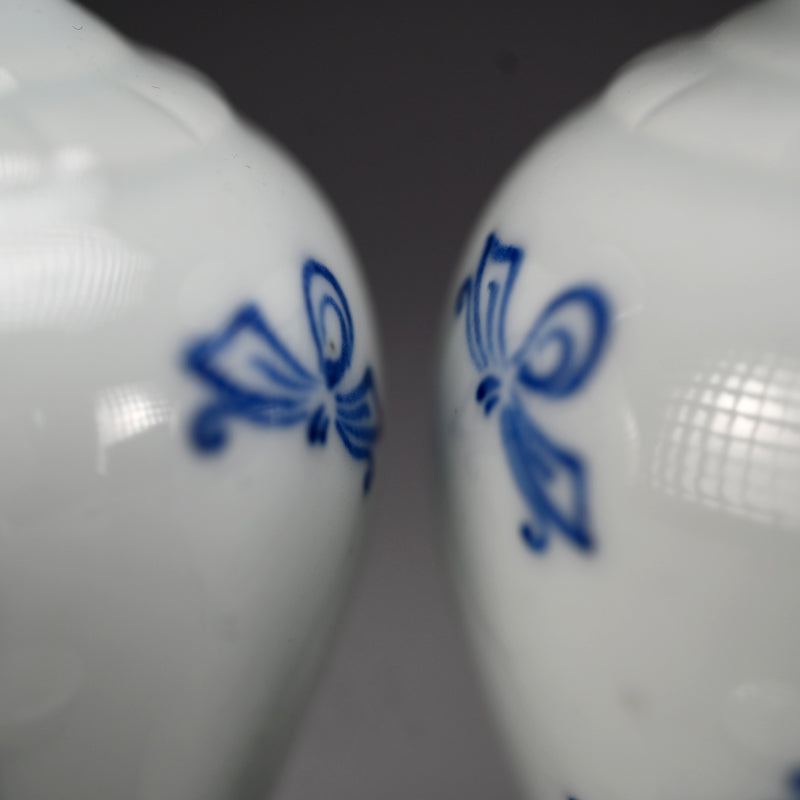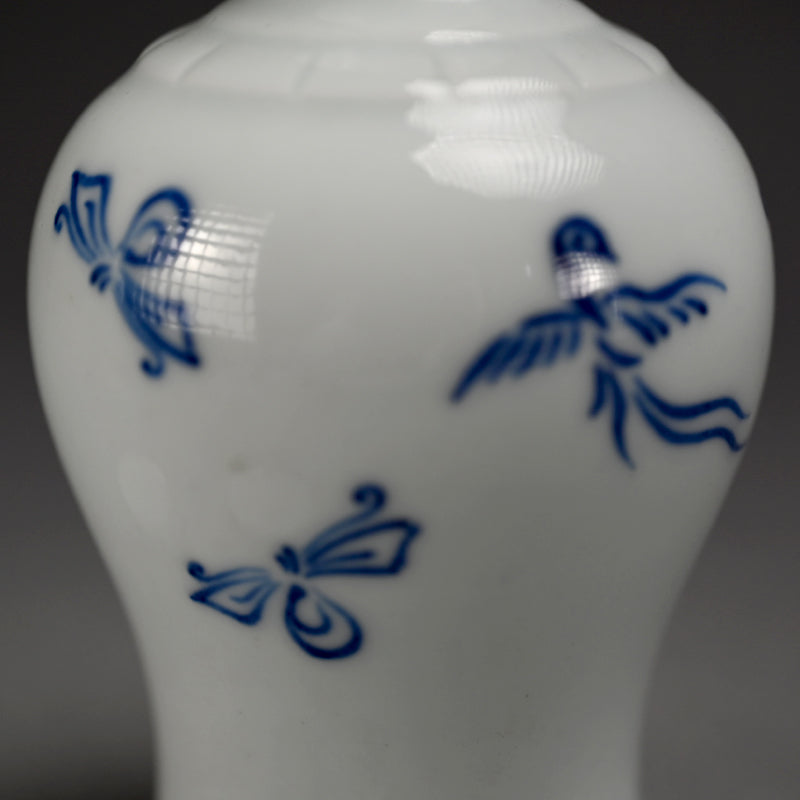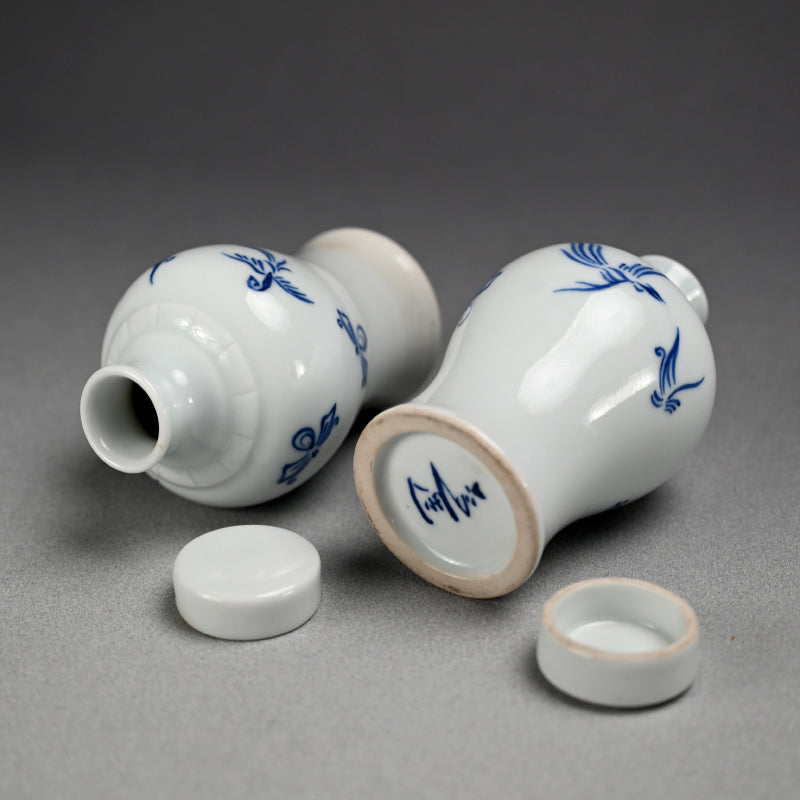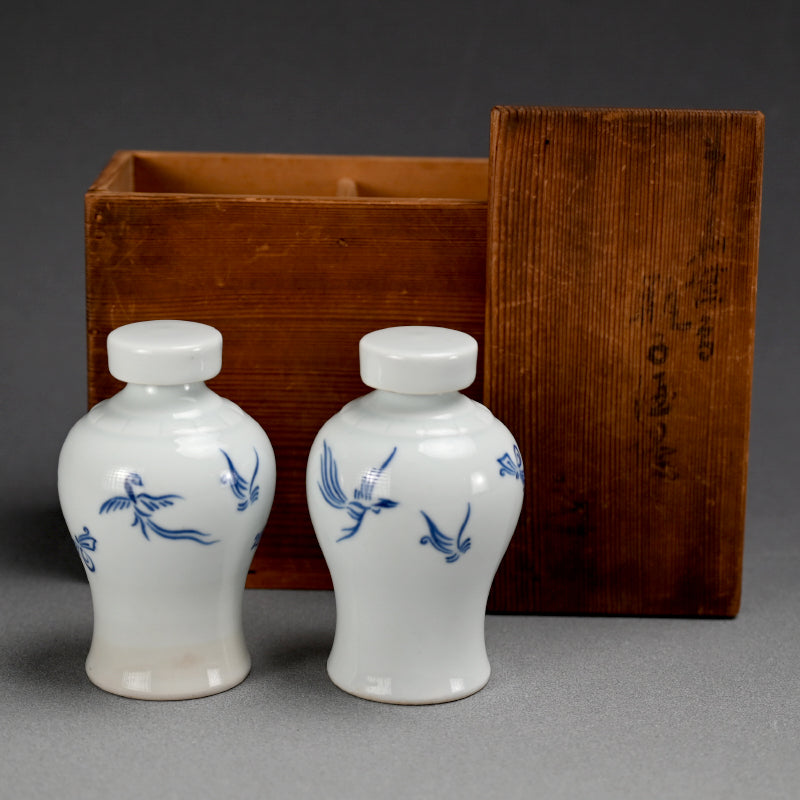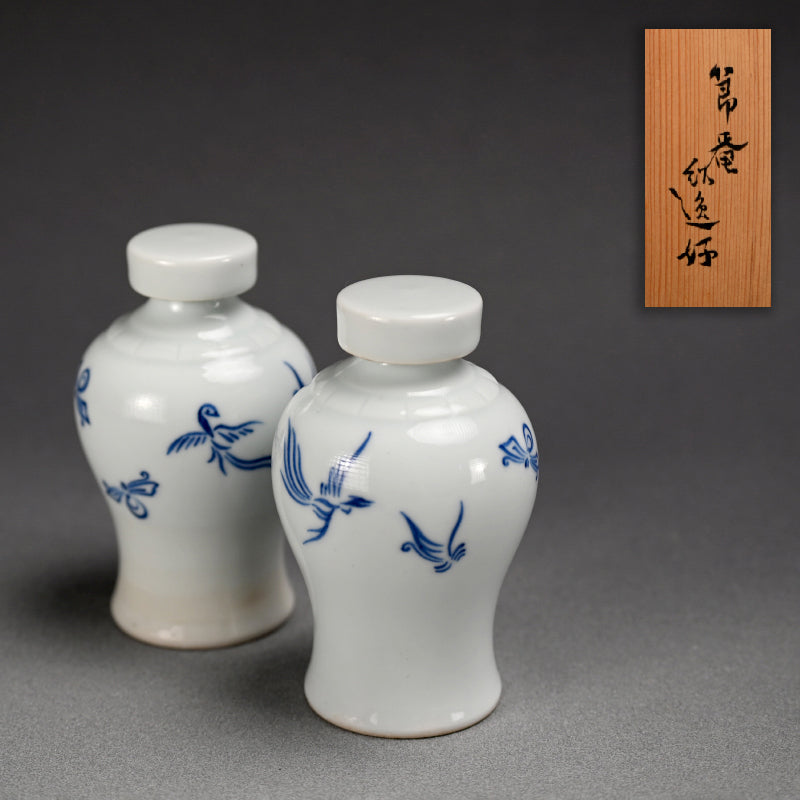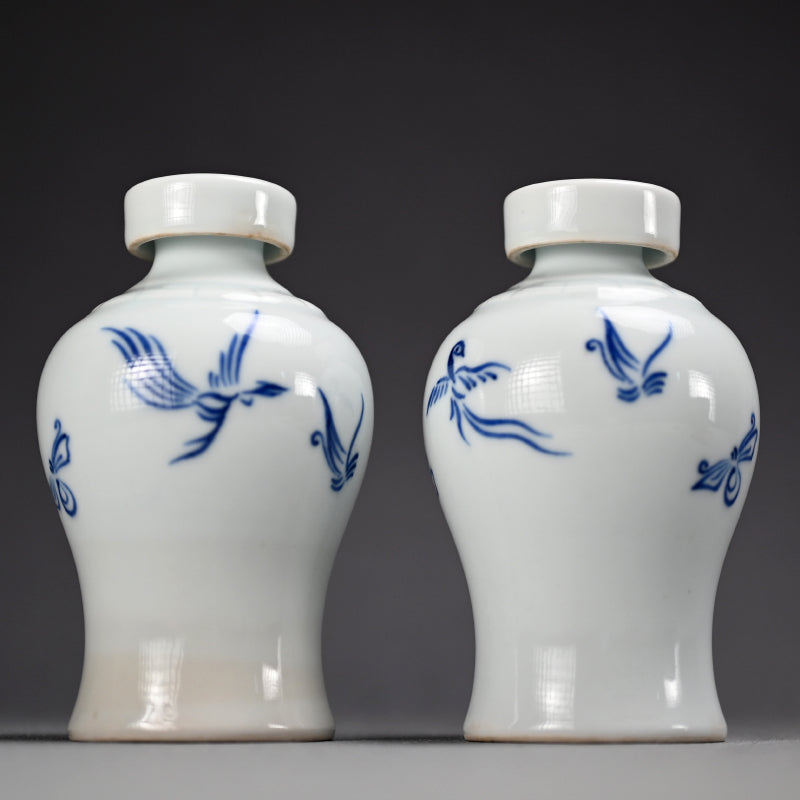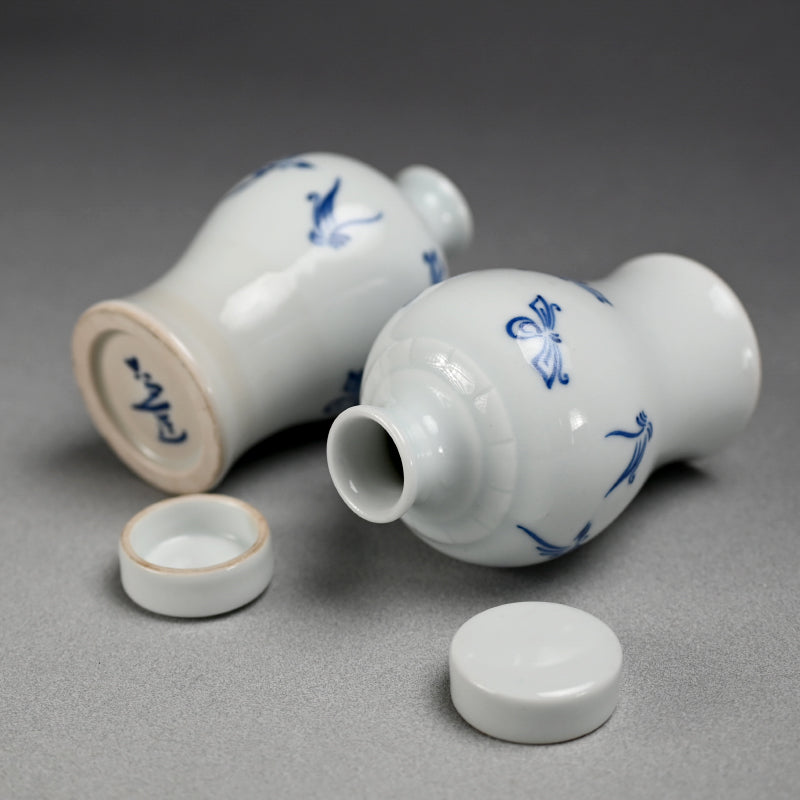1
/
of
20
Binshi Lidded Vase Set
Binshi Lidded Vase Set
Item Code: K452
Regular price
¥70,400 JPY
Regular price
Sale price
¥70,400 JPY
Unit price
/
per
Tax included.
Couldn't load pickup availability
A boxed set of Binshi offering vases decorated with regal fowl enclosed in a period wooden box by Kiyomizu Rokubei. Each is roughly 12 cm 4-3/4 inches) tall and in perfect condition. Very difficult to tell with this signature, but I believe it is the work of the 4th Rokubei, possibly a very early work by the 5th.
Kiyomizu Rokubei IV (1848-1920) was born the first son of Rokubei III and headed the family kiln from 1883-1913.He studied painting in the Shijo manner under Shiiokawa Bunrin and had a brotherly relationship with his fellow student Kono Bairei (under whom his own son would study painting). He sought to revitalize the pottery tradition of Kyoto, bringing in new techniques and styles and together with artists like Asai Chu and Nakazawa Iwata took part in the Entoen group and with Kamisaka Sekka the Keitobi-kai. He also held a strong relationship with literati artists such as Tomioka Tessai and together with these artists produced many joint works. He fell ill in 1902, finally handing the reins over to the 5th generation in 1913.
Kiyomizu Rokubei V (Shimizu Kuritaro, 1875-1959) initially studied painting and decorating technique under Kono Bairei, one of the foremost painters in Japan in the Meiji era. After graduating the Kyoto Municipal Special School of Painting, he took a position under his father at the family kiln however. That same year he exhibited his first work at the National Industrial Exposition. He was a co-founder of Yutoen with his father and Asai Chu, and worked ceaselessly to promote the pottery of Kyoto. He helped to establish the Kyoto Ceramics Research Facility (Kyoto Tojiki Shikensho) at the turn of the century which would be the proving ground for many young artist of the era. Doctor Maekawa Shinya has noted that Teishitsu-Gigei-in (Imperial Art Academy Member) Seifu Yohei III also fired his acclaimed works in the Rokubei kiln in the Taisho era. Due to his father’s poor health Rokubei V took the reins unofficially in 1902, commanding the helm until assuming the name Rokubei V in 1913. It was in 1928 that Rokubei changed the reading of the family name from Shimizu to Kiyomizu and applied it retroactively to previous generations. He exhibited constantly, and garnered a great many awards. He worked to get crafts added to the National Art Exhibition (Bunten/Teiten) and served as a judge in 1927, the first year crafts were allowed. In 1937 he was designated a member of the Imperial Art Council (Teishitsu Bijutsu Inkai). Despite changes in the world around him Rokubei persevered, working in all manner of materials and styles. >He retired in 1945, perhaps as exhausted as Japan was with the end of the war, or perhaps seeing that capitulation would signal a new era in need of new leaders and a new aesthetic. He passed the name Rokubei to his son and took the retirement name Rokuwa. Uncontainable he continued to create pottery under that name until his death in 1959. His influence is so pervasive he was voted one of the most important potters of the modern era by Honoho magazine, the preeminent quarterly devoted to Japanese pottery. A multitude of works by him are held in the The National Museums of Modern Art, both in Tokyo and Kyoto, the Kyoto Kyocera Museum, The Kyoto Hakubutsukan Museum and the Philadelphia Art Museum among others.
Kiyomizu Rokubei IV (1848-1920) was born the first son of Rokubei III and headed the family kiln from 1883-1913.He studied painting in the Shijo manner under Shiiokawa Bunrin and had a brotherly relationship with his fellow student Kono Bairei (under whom his own son would study painting). He sought to revitalize the pottery tradition of Kyoto, bringing in new techniques and styles and together with artists like Asai Chu and Nakazawa Iwata took part in the Entoen group and with Kamisaka Sekka the Keitobi-kai. He also held a strong relationship with literati artists such as Tomioka Tessai and together with these artists produced many joint works. He fell ill in 1902, finally handing the reins over to the 5th generation in 1913.
Kiyomizu Rokubei V (Shimizu Kuritaro, 1875-1959) initially studied painting and decorating technique under Kono Bairei, one of the foremost painters in Japan in the Meiji era. After graduating the Kyoto Municipal Special School of Painting, he took a position under his father at the family kiln however. That same year he exhibited his first work at the National Industrial Exposition. He was a co-founder of Yutoen with his father and Asai Chu, and worked ceaselessly to promote the pottery of Kyoto. He helped to establish the Kyoto Ceramics Research Facility (Kyoto Tojiki Shikensho) at the turn of the century which would be the proving ground for many young artist of the era. Doctor Maekawa Shinya has noted that Teishitsu-Gigei-in (Imperial Art Academy Member) Seifu Yohei III also fired his acclaimed works in the Rokubei kiln in the Taisho era. Due to his father’s poor health Rokubei V took the reins unofficially in 1902, commanding the helm until assuming the name Rokubei V in 1913. It was in 1928 that Rokubei changed the reading of the family name from Shimizu to Kiyomizu and applied it retroactively to previous generations. He exhibited constantly, and garnered a great many awards. He worked to get crafts added to the National Art Exhibition (Bunten/Teiten) and served as a judge in 1927, the first year crafts were allowed. In 1937 he was designated a member of the Imperial Art Council (Teishitsu Bijutsu Inkai). Despite changes in the world around him Rokubei persevered, working in all manner of materials and styles. >He retired in 1945, perhaps as exhausted as Japan was with the end of the war, or perhaps seeing that capitulation would signal a new era in need of new leaders and a new aesthetic. He passed the name Rokubei to his son and took the retirement name Rokuwa. Uncontainable he continued to create pottery under that name until his death in 1959. His influence is so pervasive he was voted one of the most important potters of the modern era by Honoho magazine, the preeminent quarterly devoted to Japanese pottery. A multitude of works by him are held in the The National Museums of Modern Art, both in Tokyo and Kyoto, the Kyoto Kyocera Museum, The Kyoto Hakubutsukan Museum and the Philadelphia Art Museum among others.
Share


